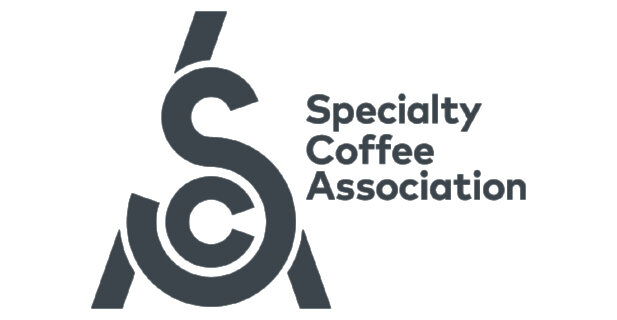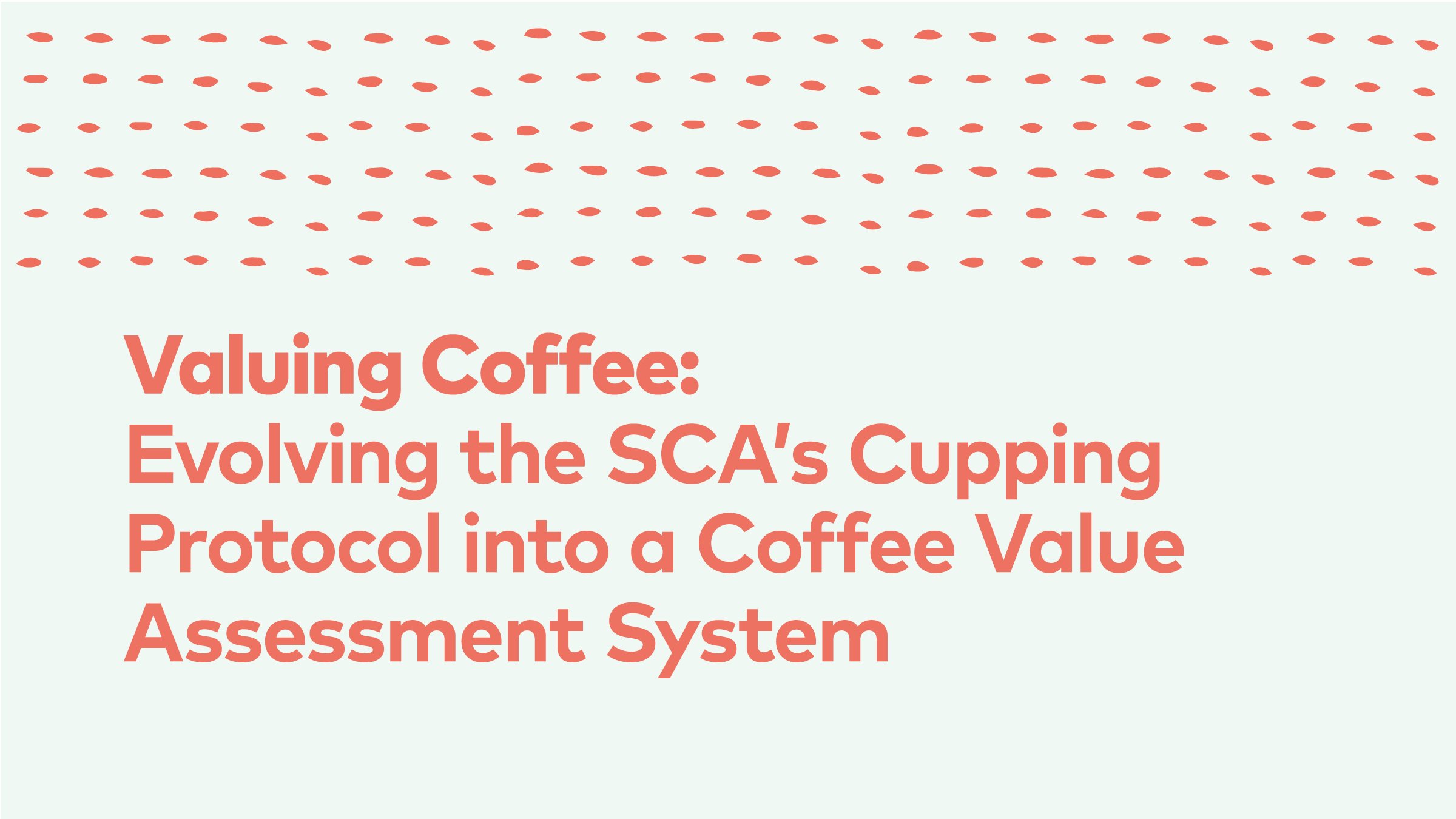Valuing Coffee: Evolving the SCA’s Cupping Protocol into a Coffee Value Assessment System | 25, Issue 18
Today’s SCA Cupping Protocol and the SCA Cupping Form are among the most used tools of the coffee industry, applied daily by thousands of people around the world, serving actors across coffee’s vast and complex value-generating system.
Originally designed to define and distinguish “specialty grade coffee” from “commercial coffee,” the early iterations of a cupping protocol were based predominately on ideas of green coffee grading. The existing form took shape in 1999, inspired by the wine industry’s embrace of a 100-point scoring system for overall quality, settling five years later into the form and protocol we still use today.[1] By the mid-2010s, we began to see the fruits of the SCA cupping system as a “long, slow development [project] initiated to provide opportunities for specialty coffee, for producing countries, and for the smallholder farmer.”[2] Today’s wide range of specialty coffees consumed and celebrated for their defining attributes and characteristics is one measure of this approach’s success, but it has been some time (20 years!) since we revisited the cupping form and protocol as an existing standard. There’s no doubt that some elements could be improved to reflect advancements the industry has made during that time in both our understanding of sensory science and coffee’s sensorial properties, as well as the specialty coffee industry and its global context.
If the original cupping protocol was based on a definition of specialty coffee, specifically the specialty grade standard for washed green arabica coffee, the evolved cupping system would need to be based on a definition, too. A new definition, proffered in a 2021 white paper,[3] slowly evolved from discussions with community members and researchers. This definition—that “specialty coffee is a coffee or coffee experience recognized for its distinctive attributes, and because of these attributes, has significant extra value in the marketplace”—builds a framework that respects diverse consumer preferences while simultaneously strengthening producers’ understanding of how to communicate and increase the value of the coffees they produce.
Everyone manages change differently, and we knew we needed to tread extra carefully with something as far-reaching and globally understood as cupping. While the SCA protocol is familiar to many—and its evolution is an incredible opportunity to integrate what we now know about how, when, where, and by whom coffee is valued—it has also become increasingly enmeshed in our ways of buying and selling coffee, featuring regularly in contracts.[4] In late 2020, a working group of SCA staff embarked on their first step of the evolution process with a wide-ranging survey of over 1,500 coffee professionals across the value chain to understand how the form is currently used and perceived by the larger coffee community.[5] The goal was to amplify the voices of its users, with a particular focus on those voices that have not always been included in projects of this kind: coffee producers and those who work in coffee-producing countries. We found that the specialty coffee industry has become global and diverse, that users need more descriptive sensory data (and that this data should be relevant to the cupping score), and that sweetness has become more important. We also captured a long “wish list” of potential improvements, which we then categorized based on their radicality (i.e., how significant would this change feel?) and their potential to impact scoring. We then combined these survey learnings with advancements in sensory science—notably best practices around the use of kinds of sensory tests—to help frame the changes we could make during this evolutionary process. Any changes would need to be consistent with the SCA’s sustainability goals, so that actors in the coffee chain can have more equitable access to the value that specialty coffee creates; they would also need to result in a robust sensory tool, as a coffee’s sensory attributes are a critically important factor in determining its value.
The existing form and protocol combine assessment types, which can lead to bias when assessing a coffee's intrinsic attributes. An evolutionary concept—to "compartmentalize" different evaluation steps, which would bring the existing system in line with sensory test best practice—was developed for testing. After green grading, the first new compartment, “descriptive cupping,” is meant to serve as an objective assessment of a coffee’s intrinsic sensory attributes. The current prototype offers both a “check-all-that-apply” assessment of different categories, based on overarching categories from the World Coffee Research Sensory Lexicon, as well as intensity ratings. The second compartment, or “affective cupping,” offers cuppers a chance to mark their impression of quality of the coffee’s sensorial attributes using a scale of one to nine, preferred by sensory scientists. The third compartment, still in development, would offer a place to record a coffee’s extrinsic attributes, and the fourth, currently described as a “value discovery tool,” would synthesize the findings in the three previous compartments to help a buyer compare the coffee being evaluated against their stated preference for all the attributes they value.
At the time of writing, the SCA has completed an exploratory testing run in collaboration with World Coffee Research (see here) to understand how cuppers actually use the current protocol when buying and scoring coffees in the real world. Led by Technical Officer Dr. Mario Fernández-Alduenda, we’ve also completed our first round of pilot tests, featuring the new descriptive and affective cupping sections, with an initial group of coffee producers and exporters. We're now working to develop an "early adopter program" for further testing and feedback as we refine the design and presentation of the form and protocol documents. There’s so much more to do, but we are excited to enter this phase with you as we evolve this widely used tool into a Coffee Value Assessment System aligned with the SCA’s mission to make specialty coffee a thriving, equitable, and sustainable activity for the entire value chain. ◇
JENN RUGOLO is the SCA’s Curatorial Director and Editor of 25. To learn more about the SCA’s Coffee Value Assessment system project, visit sca.coffee/value-assessment.
References
[1] Coffee Sensory and Cupping Handbook, Edn. No. 1.
[2] Julie Housh, “Introduction: Jaago and Smell the Coffee,” 25, Issue 17, https://sca.coffee/sca-news/25/issue-17/jaago-and-smell-the-coffee-deanonymizing-and-decolonizing-indian-coffee.
[3] Towards a Definition of Specialty Coffee: Building an Understanding Based on Attributes, https://sca.coffee/attributes-whitepaper.
[4] A survey in late 2020 indicated 90% of contracts include a cupping score. Read a full report of this project: https://sca.coffee/cupping-perception-study.
[5] Over 80 countries were represented among the online survey respondents, with 67% responding in Spanish, 57% responding in English, 44% in Simplified Chinese, 11% in Korean, and 4% in Traditional Chinese. In additional to the online survey, 47 semi-structured interviews, between 30 and 90 minutes in length, were conducted across a matrix of value chain role and geographic region.
We hope you are as excited as we are about the release of 25, Issue 18. This issue of 25 is made possible with the contributions of specialty coffee businesses who support the activities of the Specialty Coffee Association through its underwriting and sponsorship programs. Learn more about our underwriters here.


